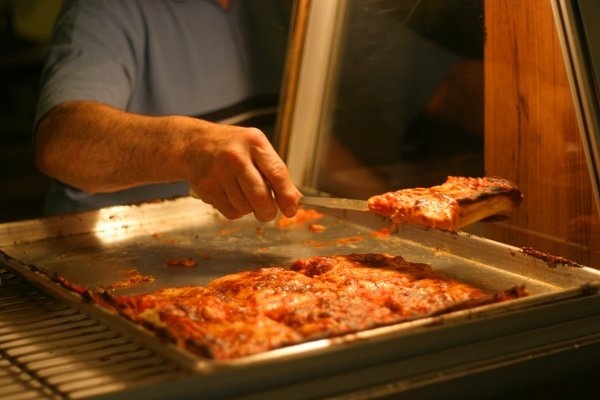The Feeling of Home in the North End
by Caitlin Vanderbilt
I moved to Boston’s North End two and a half years ago, having just returned from a year living with a host family in Florence. I immediately loved the neighborhood because it felt a little like being back in Italy. So when I was choosing a paper topic for Dr. Carole Counihan’s food ethnography class, I knew I wanted to research food in the North End. While doing my research, I conducted interviews with six North End residents, attended neighborhood meetings, and did participant observation in local cafes and stores with the goal of understanding how residents interact with food and food institutions (restaurants/cafés/stores) in their neighborhood.

The demographics of the North End have changed dramatically in the last 100 years. Once a 100% Italian neighborhood, it is now only about one third Italian. There are just over 10,000 residents in the 0.21 square miles of the North End, and in that same space there are 91 pouring liquor licenses, 10 retail liquor licenses, and roughly 120 restaurants (almost all are Italian).
The fact that there are 120 restaurants in the North End shows how much the Italian community and identity is tied to food. While these Italian restaurants are the public face of the North End, every resident I spoke with also talked about the Italian food they eat at home. These homemade meals are often connected to Sunday family dinners, or the Italian feasts, and seek to reclaim or maintain an Italian identity. In his interview, Vincent Ciampa*, a 20 year resident of the North End, said, “People come to the North End because it’s Italian. They want to experience Italianness.” Steven Russo*, a 17 year resident of the North End, explained that people come to the North End to, “celebrate Italian culture.” Those seem to be the reasons that people stay, too. Despite current trends, Italian and non-Italian residents alike are working to preserve the small urban community that the North End is known for.

Boston’s Italian community no only manifests itself in the religious festivals and the popular restaurants on Hanover Street, but also in its informal cafés. During our interview, Bobby Eustace at Polcari’s Coffee (est. 1932) called his shop one of the “hearts of the North End”. My interest is this idea of “hearts” led me to ask every participant where they went for pizza and coffee in the North End, and their answers were nearly unanimous. The choice for pizza was Galleria Umberto, a small shop that is open Monday-Saturday from 11am to whenever they run out of pizza… “When the last slice goes, the doors close.” And Caffe Paradiso was the choice for morning coffee. Most people sit or stand at the bar and chat with their neighbors, occasionally in Italian. While Caffe Paradiso hosts the morning crowd, Caffe dello Sport is the place to be at night.
There is some tension between longtime residents and newer neighbors as well as restaurants goers, but every person I spoke with believed the North End is still an Italian neighborhood. My research revealed that Italian identity and community are complex concepts, changing depending on the time, place and situation. It also explained why you’ll find locals having a slice of pizza at Galleria Umberto right at opening time.

*Pseudonyms used to protect participants’ privacy, except for Bobby Eustace at Polcari’s Coffee.
Caitlin is a first-year MLA candidate interested in Italian food and culture. To read her full research paper, please email cvanderb@bu.edu.